With just an hour or so to spare before check-in time for my flight back to Manila, I make my way from Cortes to the next town northwards, Maribojoc. This is another old town, actually the mother parish of Cortes. While an earlier church was said to have been built in 1798, the present church dates from 1852 and was completed in 1872.
The church façade is wide, giving fair warning that the entire structure is quite massive. A stone image of Christ the King exposing His Sacred Heart and with a Crown at His feet is positioned in the middle of the front yard
and a stout belltower stands on the right.
Above the main entrance and flanked by cross-hatched square windows is a stone relief depicting San Vicente Ferrer, the parish’s secondary patron.
The sides of the exterior feature round windows along the upper half of the walls, and a four-sided red roof may be seen in the distance above the crossing.
By the entrance is a marker to commemorate the establishment of this church as the diocesan shrine of Saint Vincent Ferrer.
The front doors are wide open, so we can enter by this way and pass right under the choirloft.
Adjacent to the choirloft, to the right side, is the pipe organ,
which is said to date from the 1890’s and is therefore newer than its early-19th century brethren in the other old Bohol churches that we have visited.
Right under the wooden staircase that leads up to the choirloft
is a hammered-metal carroza with a white-cloud-skirt.
Making an about face, we admire the fine checkerboard floor
that paves the very wide aisle
and leads to the altar in the far distance.
Elsewhere were other beautiful examples of old cement tiles, including a red-and-white checkerboard
and something rather more colorful.
While walking up the aisle, one notices a doorway, currently shut.
I also noticed that the pews had brass markers on them, acknowledging the generous patronage of the town’s natives who had since migrated to other parts.
Right under the dome of the crossing is an elaborate ceiling painting.
The Maribojoc church ceilings were painted by Ray Francia in the 1930’s; he and Canuto Avila painted many other church ceilings in Bohol, as we had already previously seen. Unfortunately, it was too dark inside this church to properly photograph this particular example.
While the ceilings were lavishly painted, the walls were plain, with only the Stations of the Cross and some moss adorning them.
The pride of Maribojoc church must be its elaborate gothic-style retablos, dating from the 1930’s, all exceptionally well-carved and –painted. In the central niche of the main retablo is a small image of the secondary patron San Vicente Ferrer, right above which is a small image of the patron, the Santa Cruz (Holy Cross).
In the niche above is the Holy Trinity, which is flanked by roundels (round-shaped paintings), which according to our Visita Iglesia Bohol guidebook probably depicts allegories of the Finding and the Veneration of the True Cross.
Below these and flanking the central niche are undersized images of the Madonna and Child and Saint Joseph and the Child Jesus.
Overlooking the altar is a gallery, which unlike other altar galleries in other old churches is rather more exposed.
The left and right transepts have two other retablos each, also very finely carved and painted. The left-side retablos are these ones:
And the right-side retablos are these:
It is obvious that the images that they hold are far too small to be appropriate for these sizes of retablos. In the guidebook, Regalado Trota Jose surmises that perhaps the original images have been lost in the course of time, or even that funds had simply run out for commissioning proper images after paying for the retablos themselves!
Fortunately, it was Lent when I visited, so Holy Week processional images were exposed and venerated in the sanctuary area, including this Nazareno
this Dolorosa
and this Pieta
And with just minutes to spare, I end this ten-part Visita Iglesia (Plus) Bohol, rush to the Tagbilaran airport, and resolve to do more of this at some future time. In the meantime, why not do your own self-guided Bohol nature and heritage tours yourself?
Originally published on 24 July 2011. All text and photos copyright ©2011 Leo D Cloma. The moral right of Leo D Cloma to be identified as the author of this work has been asserted.
Original comments:
arcastro57 wrote on Sep 28, '11, edited on Sep 28, '11
Compare this with the Maribojoc church interior as it looked in 1912:
http://arcastro57.multiply.com/photos/album/66/BEFORE_STRANGE_ALTARS#photo=14 |
rally65 wrote on Sep 28, '11
The retablo looks to be exactly the same. It's interesting how there were so few pews in those days.
|
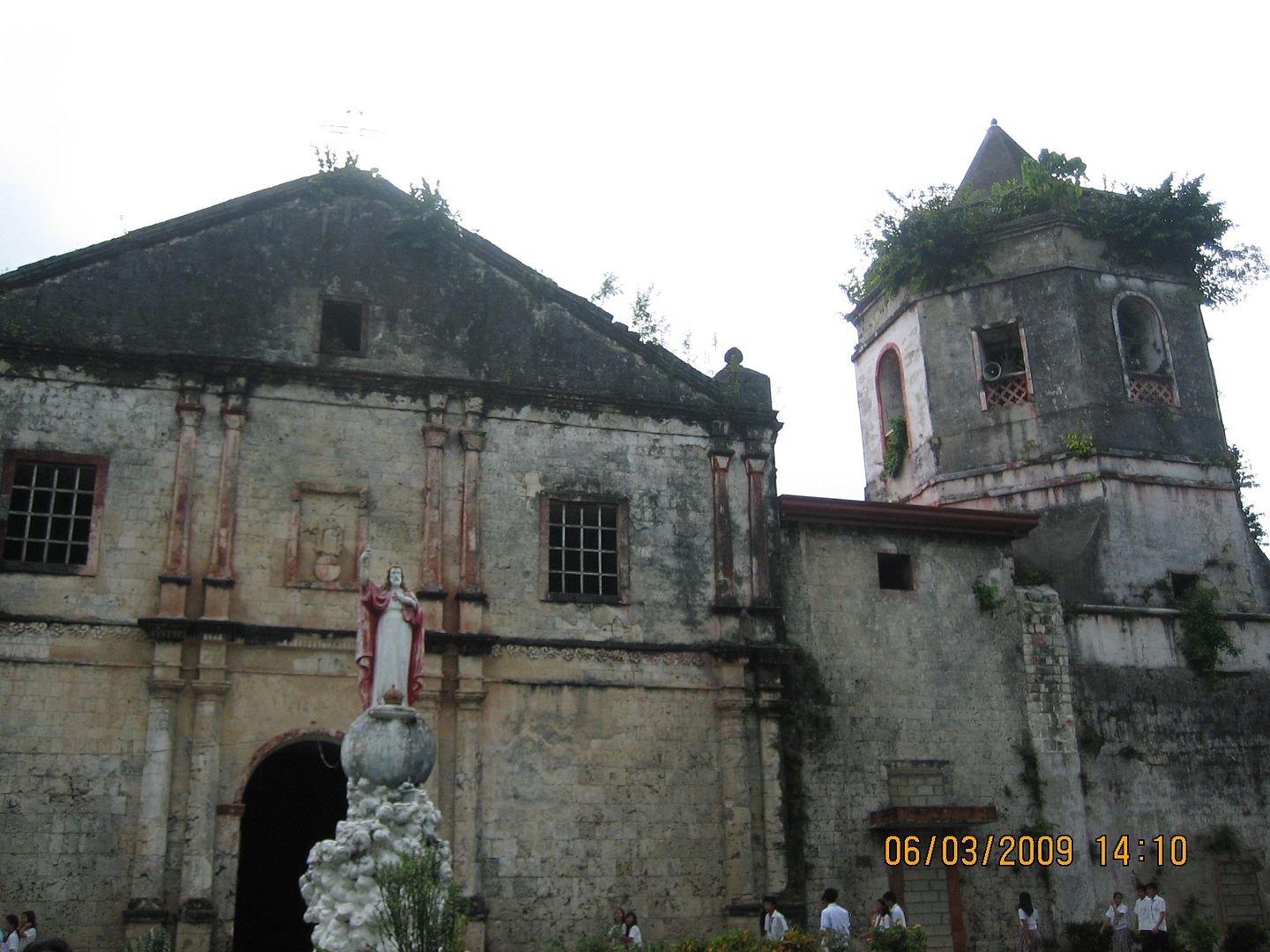




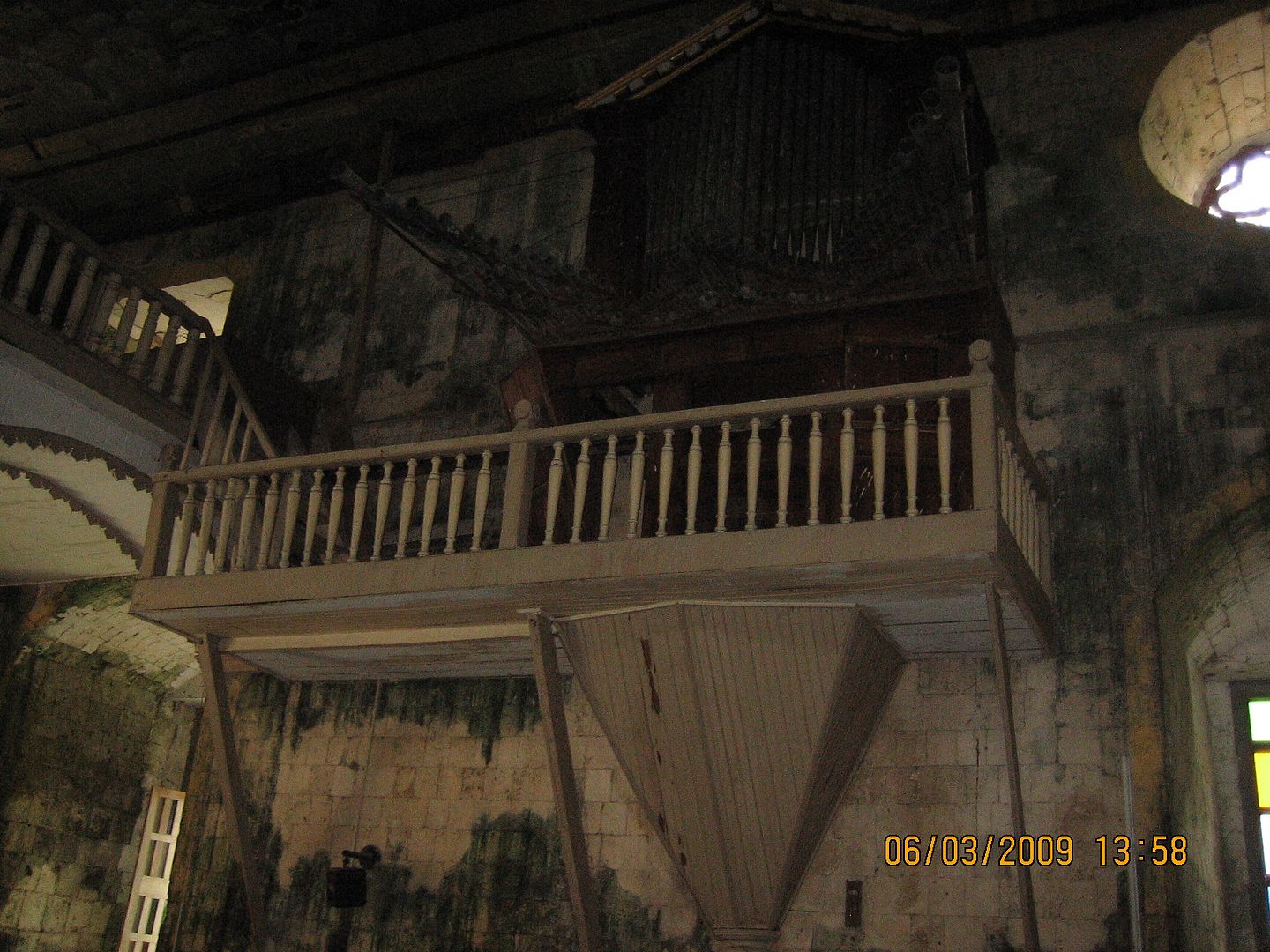
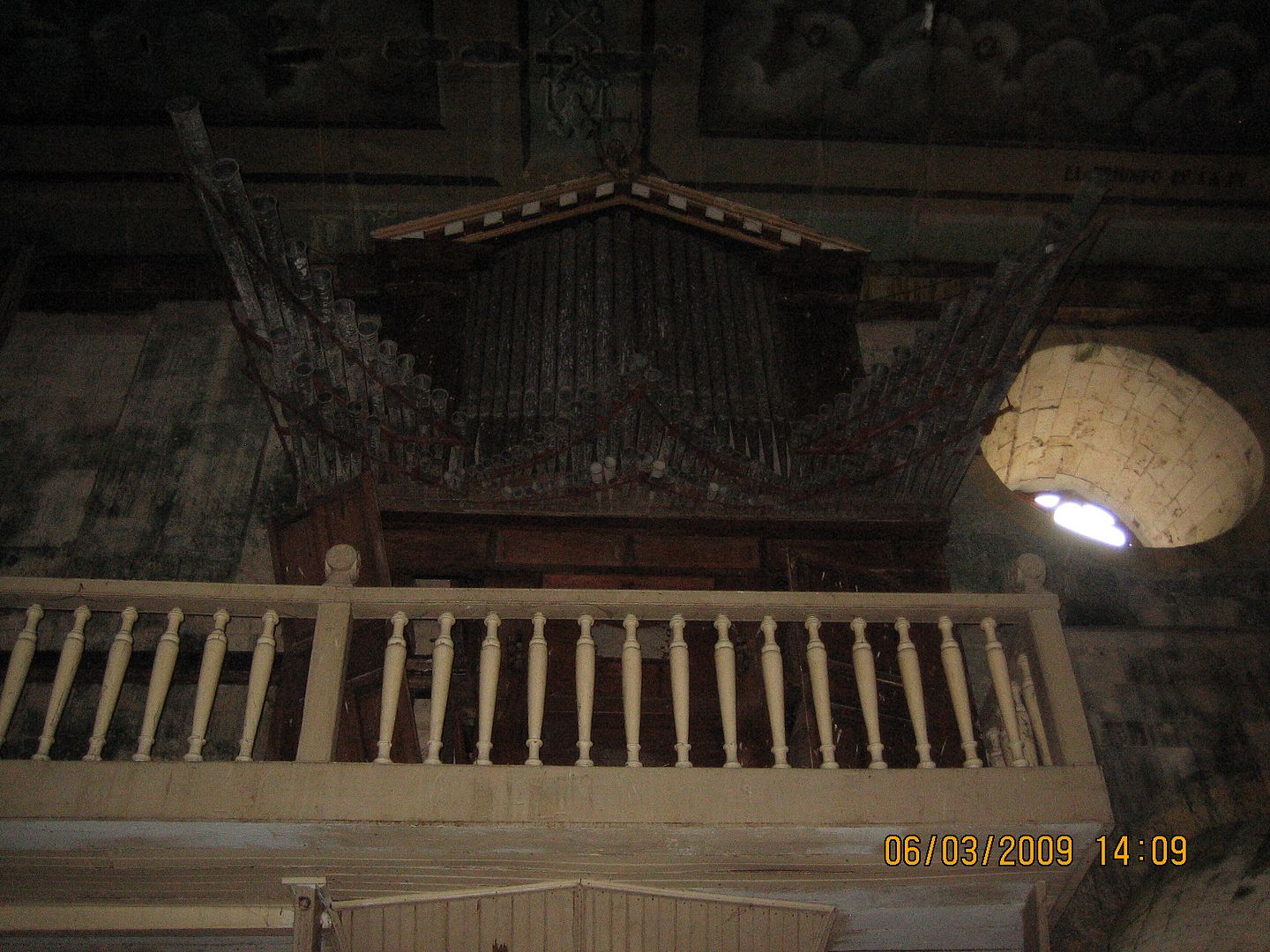


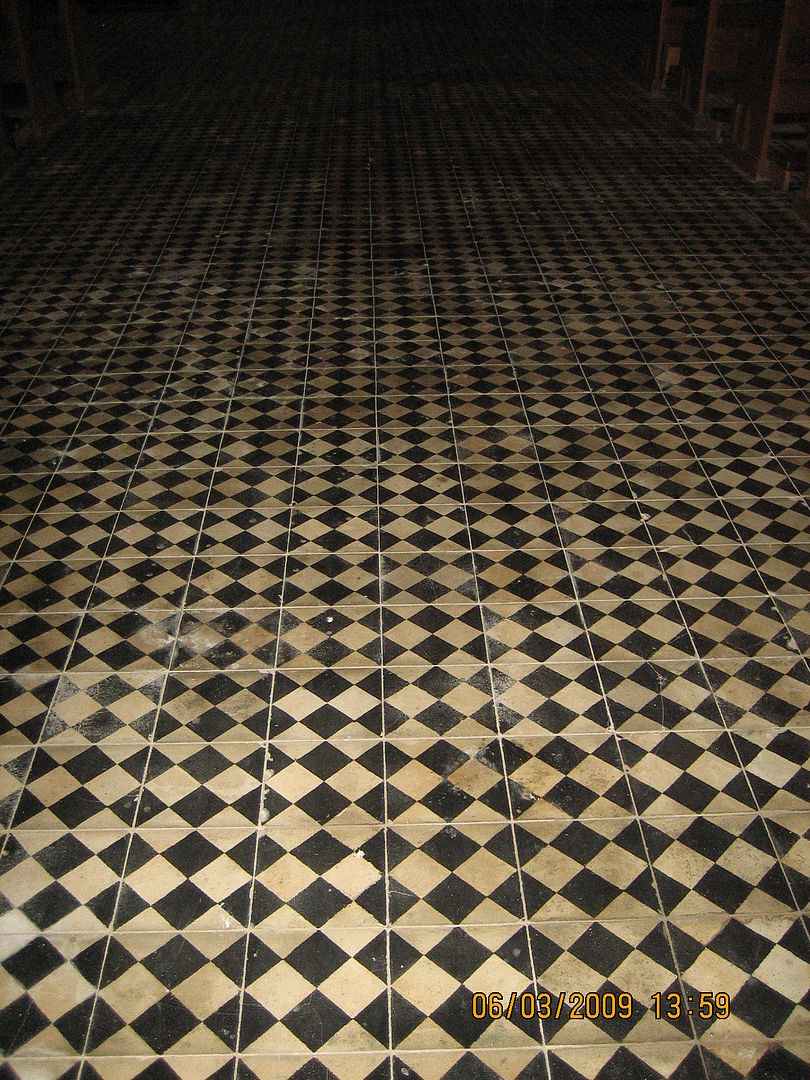
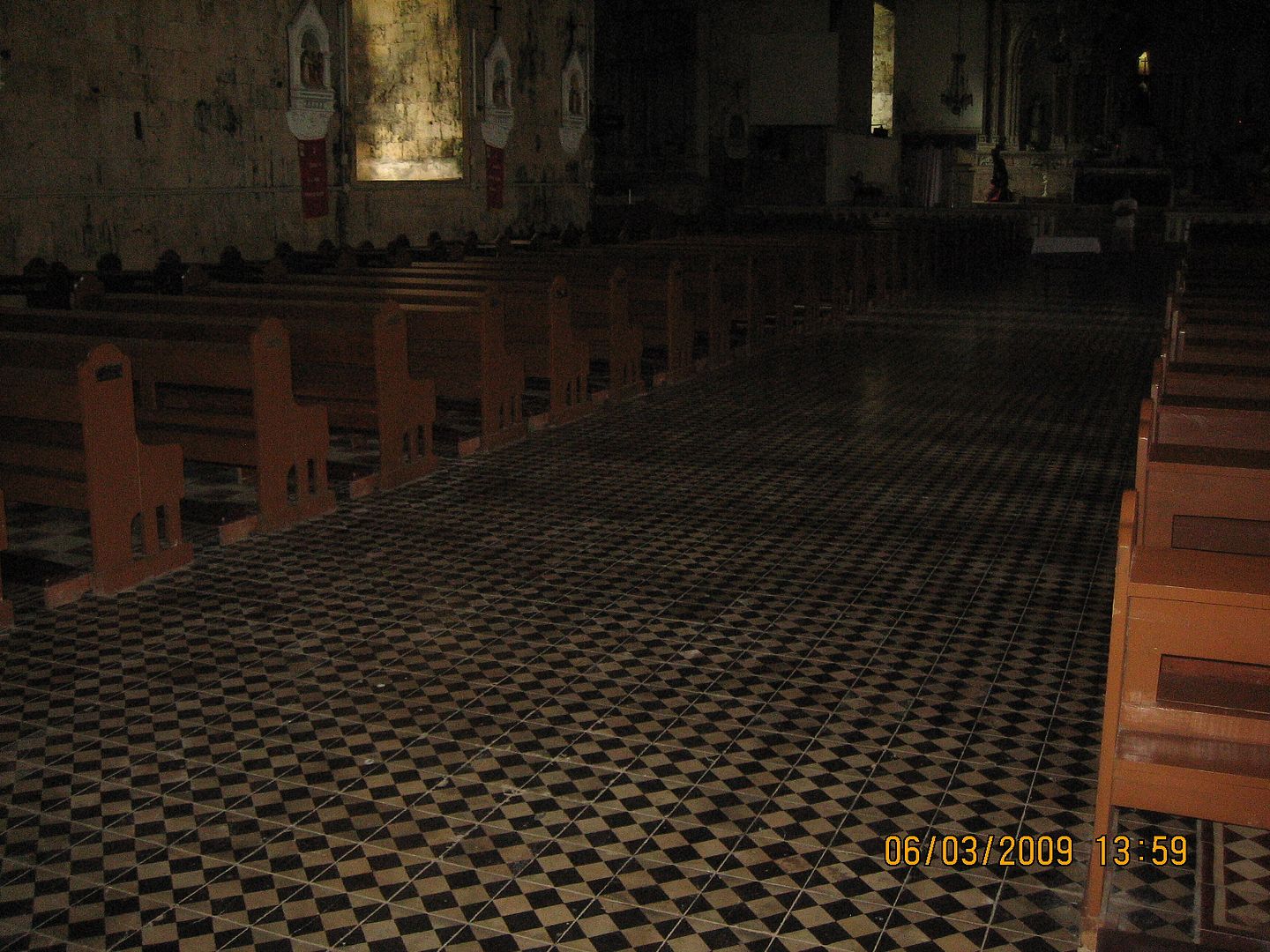
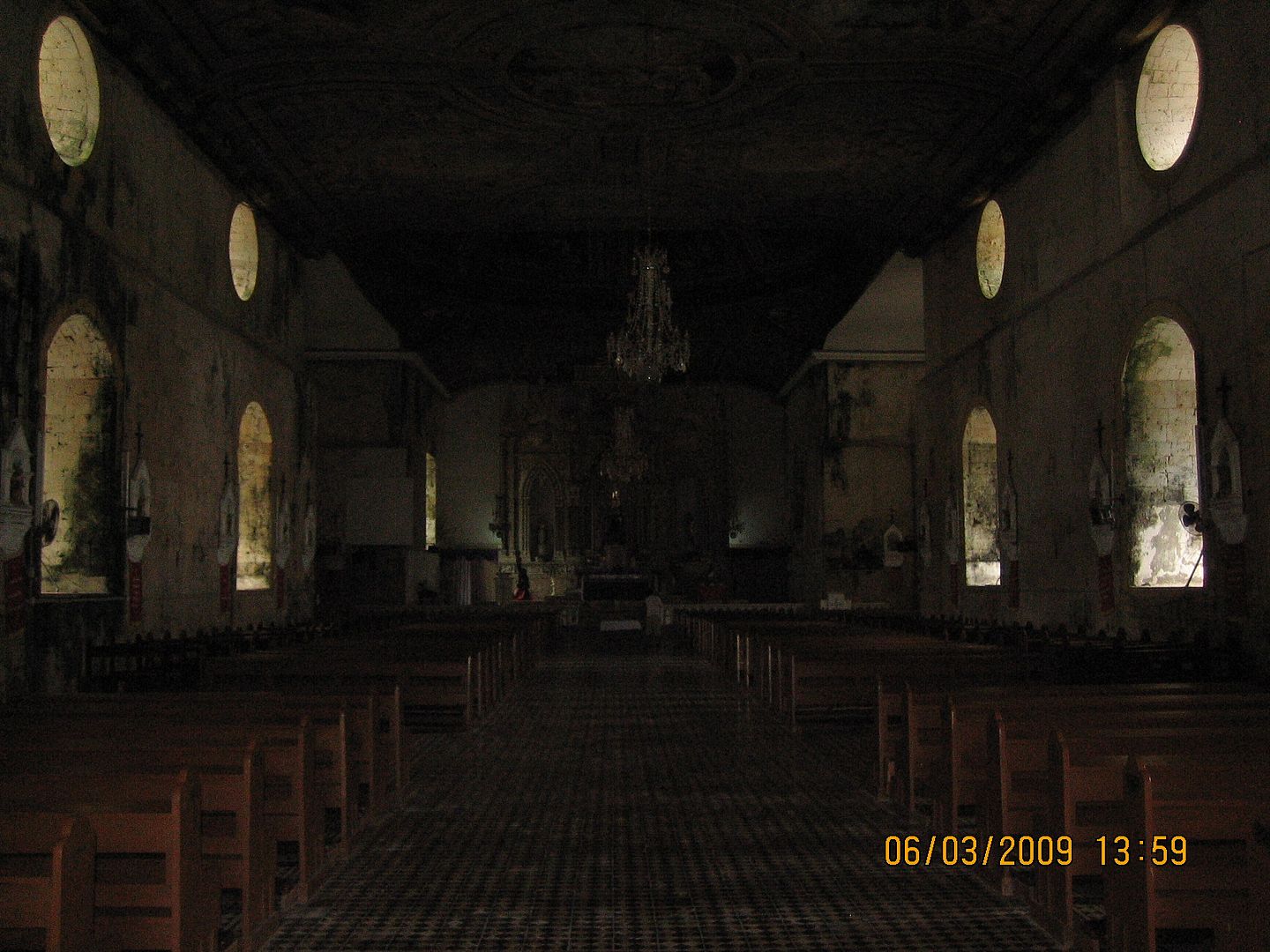
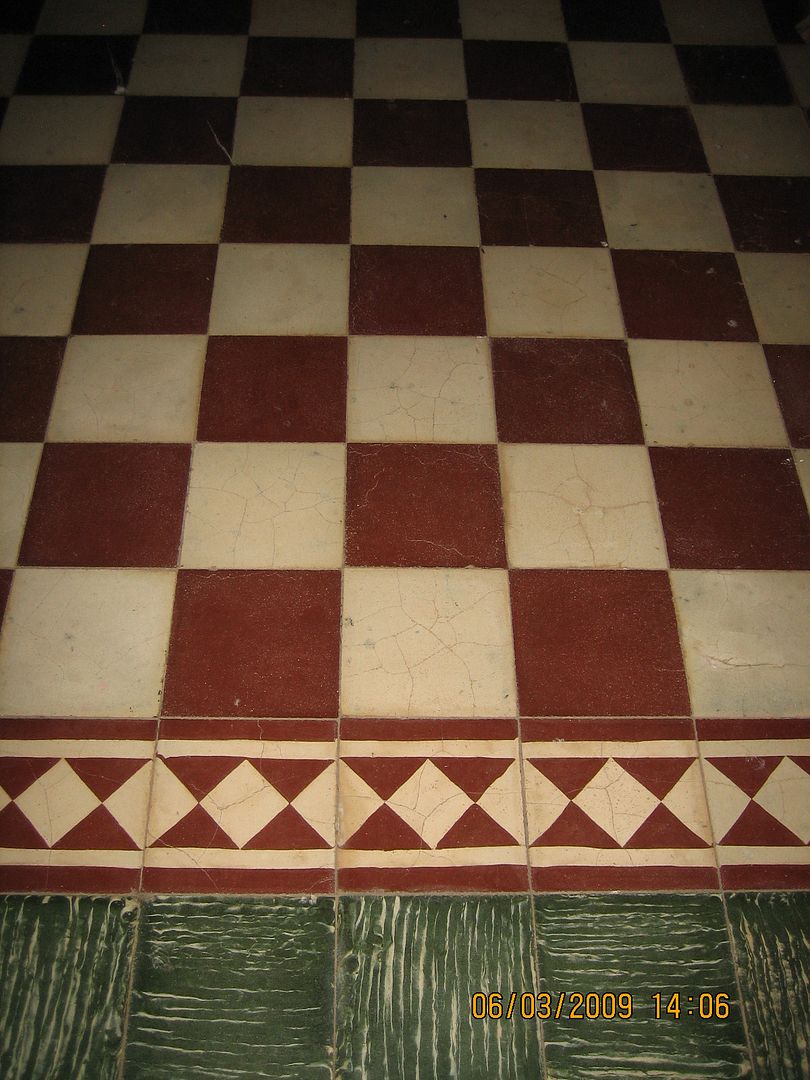

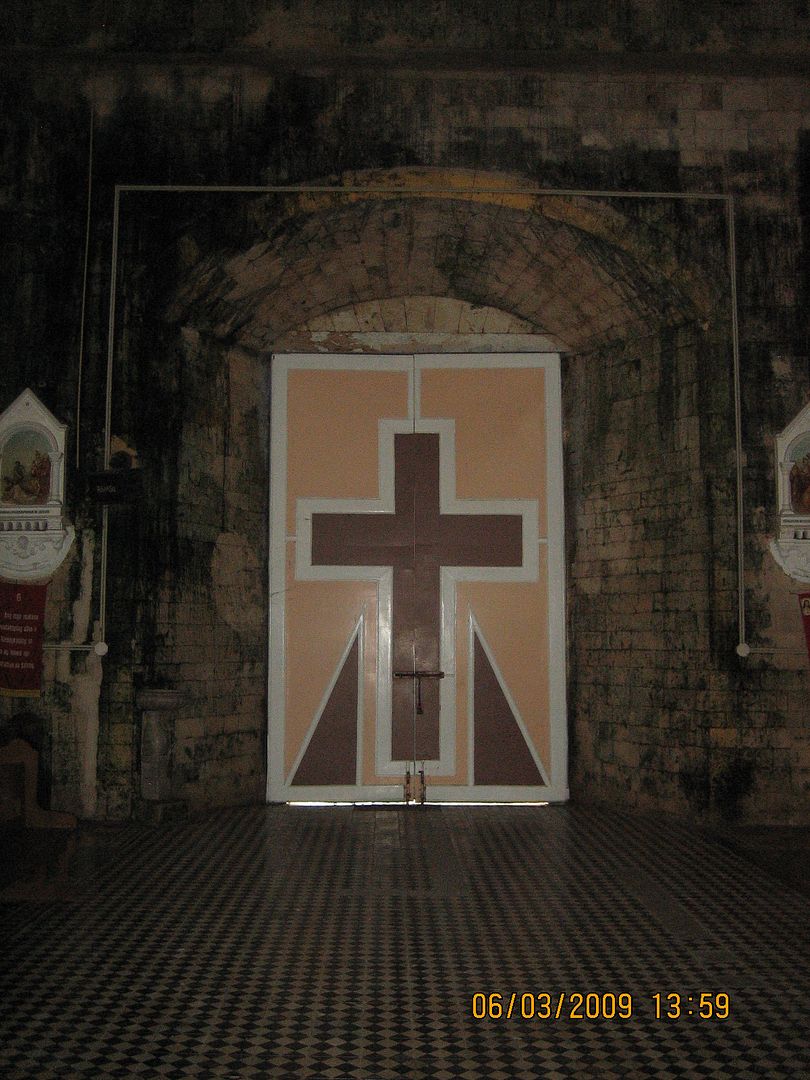
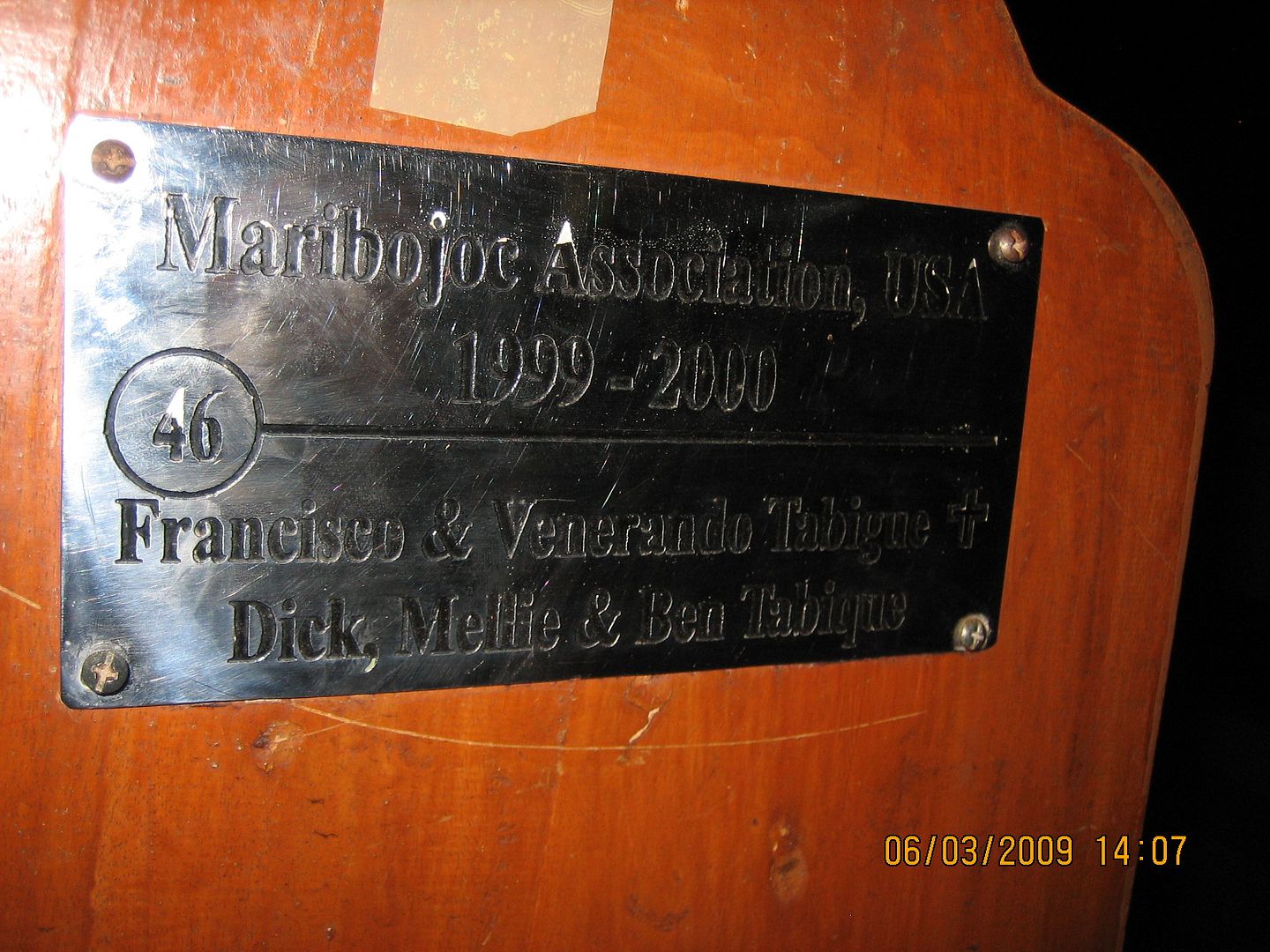
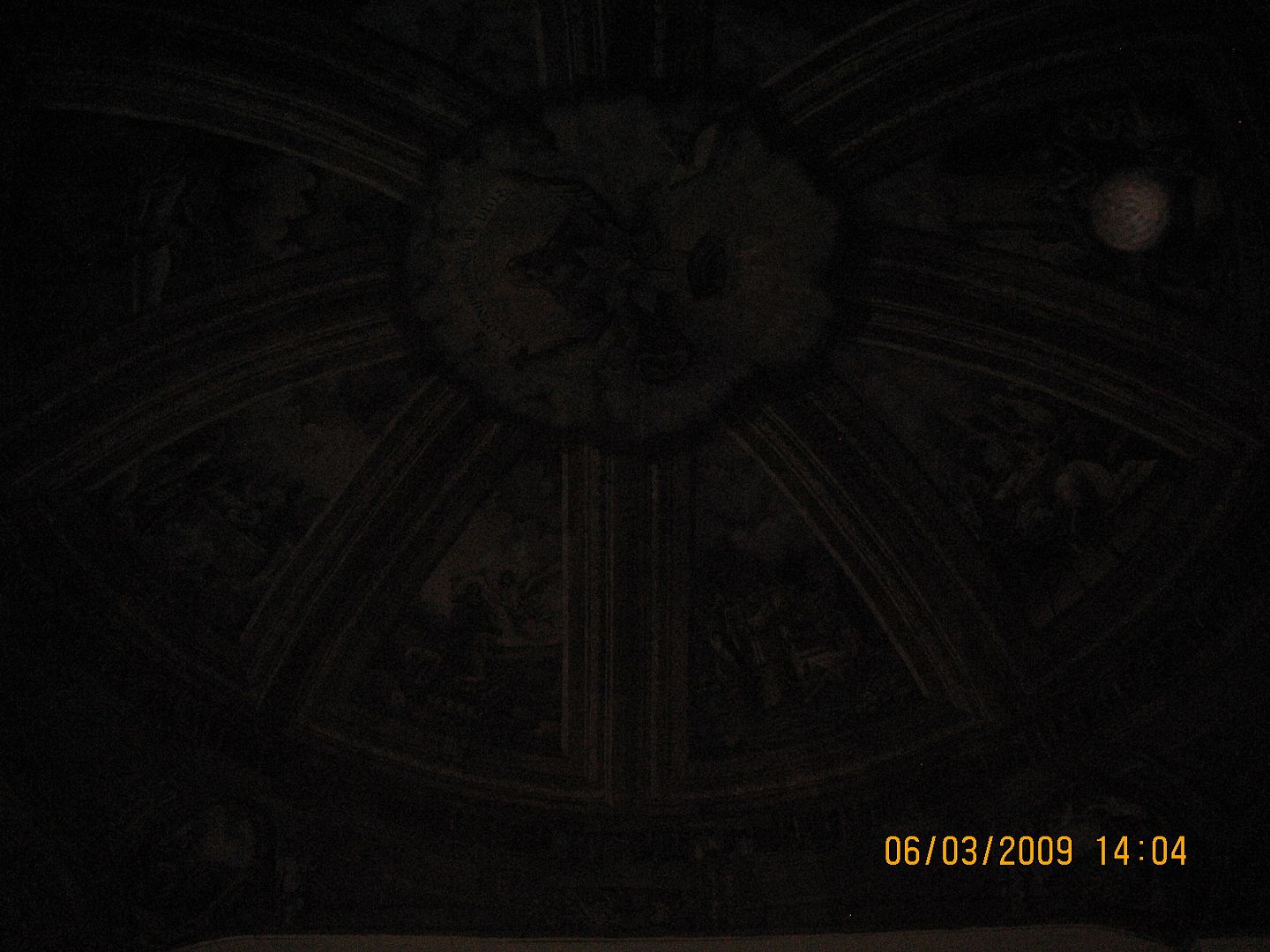

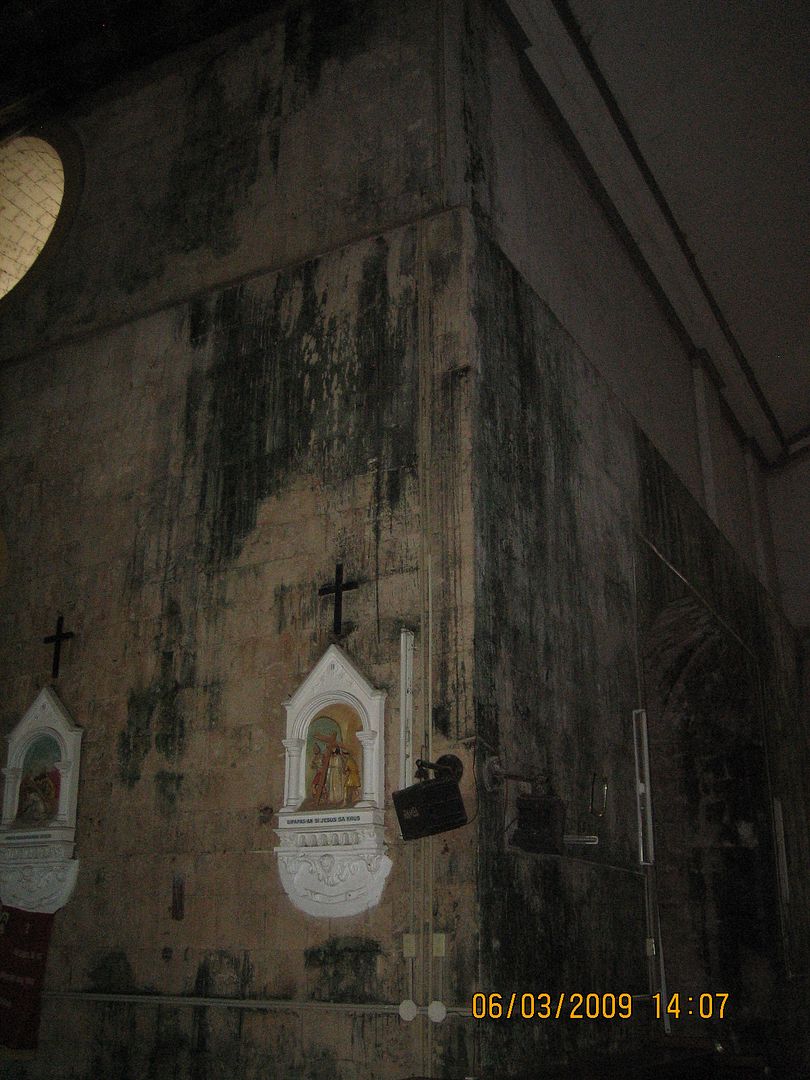
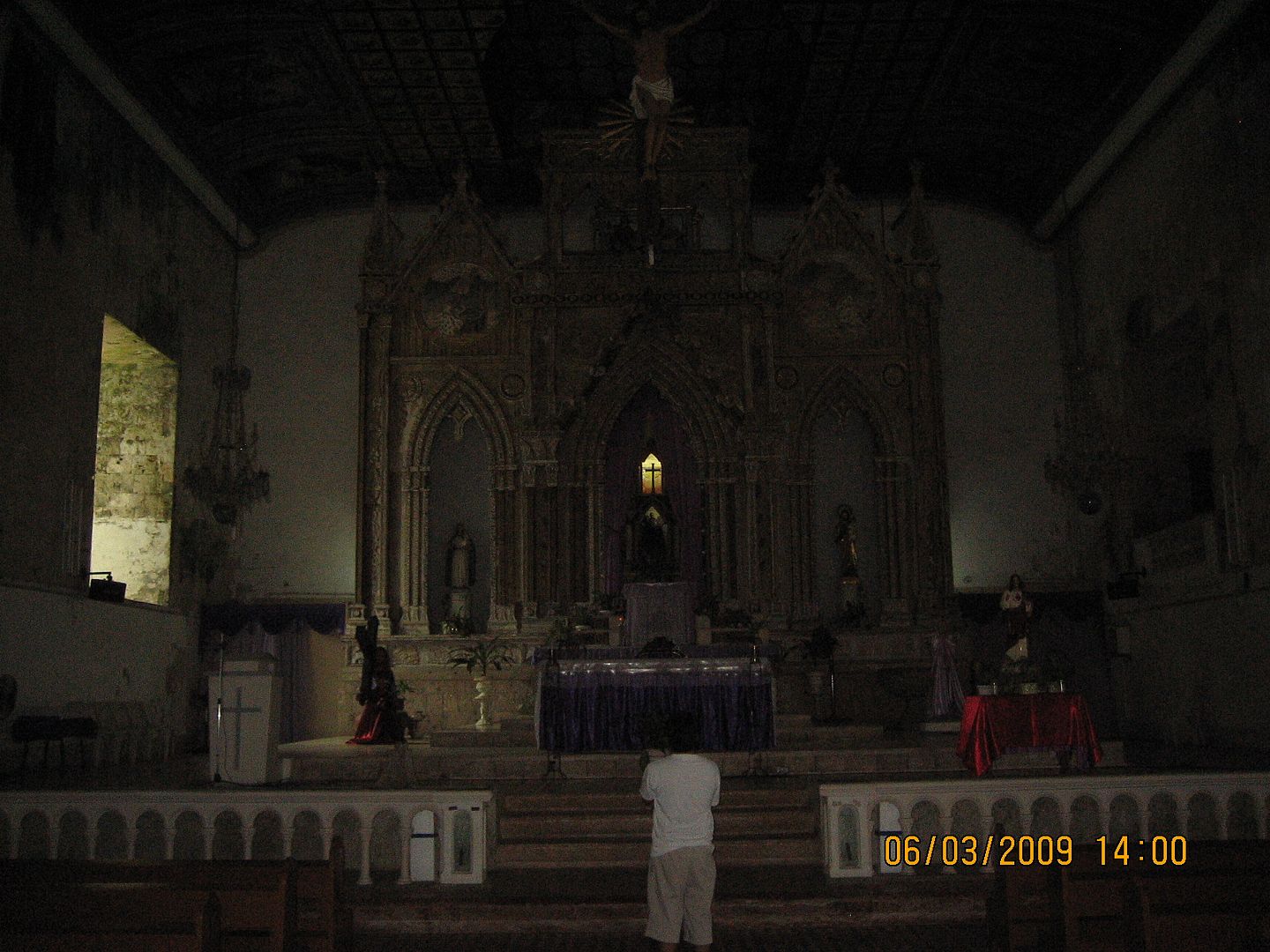
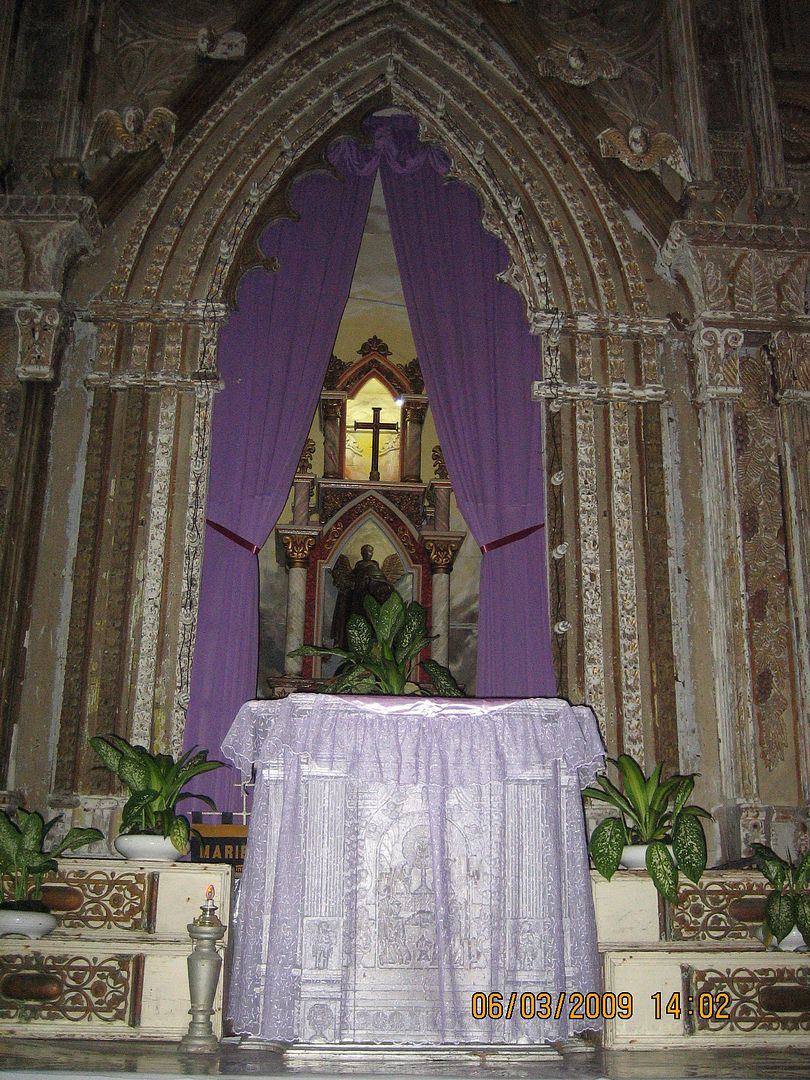
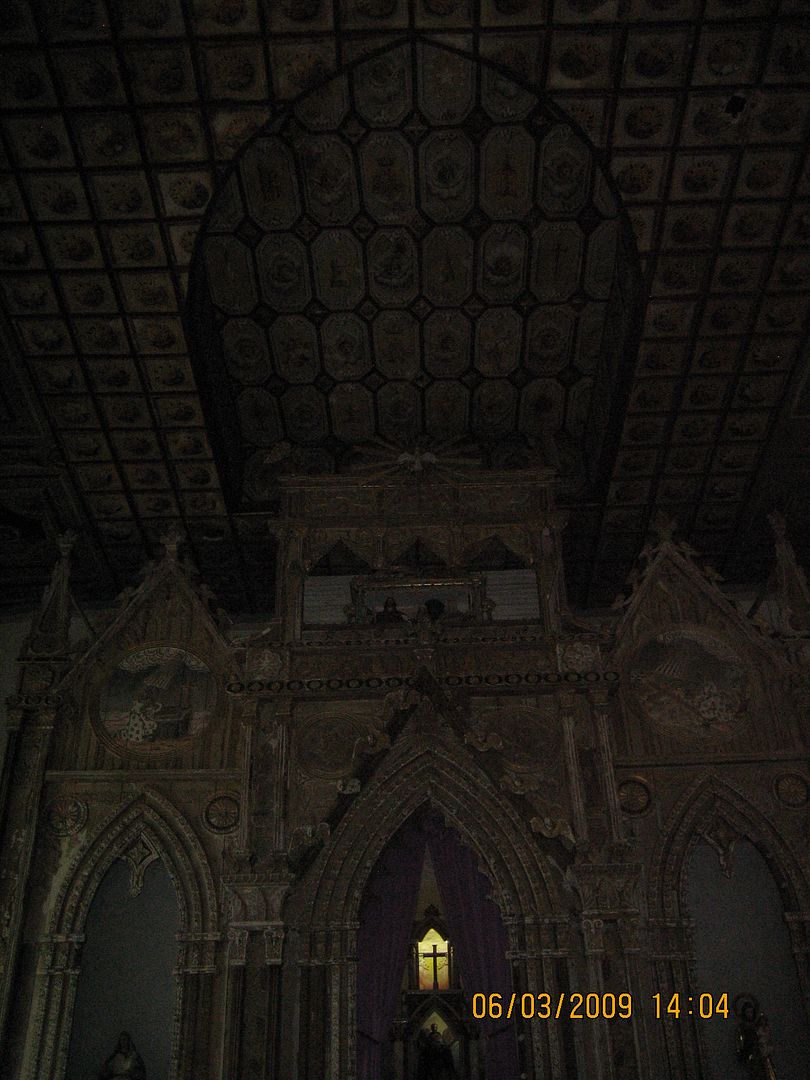
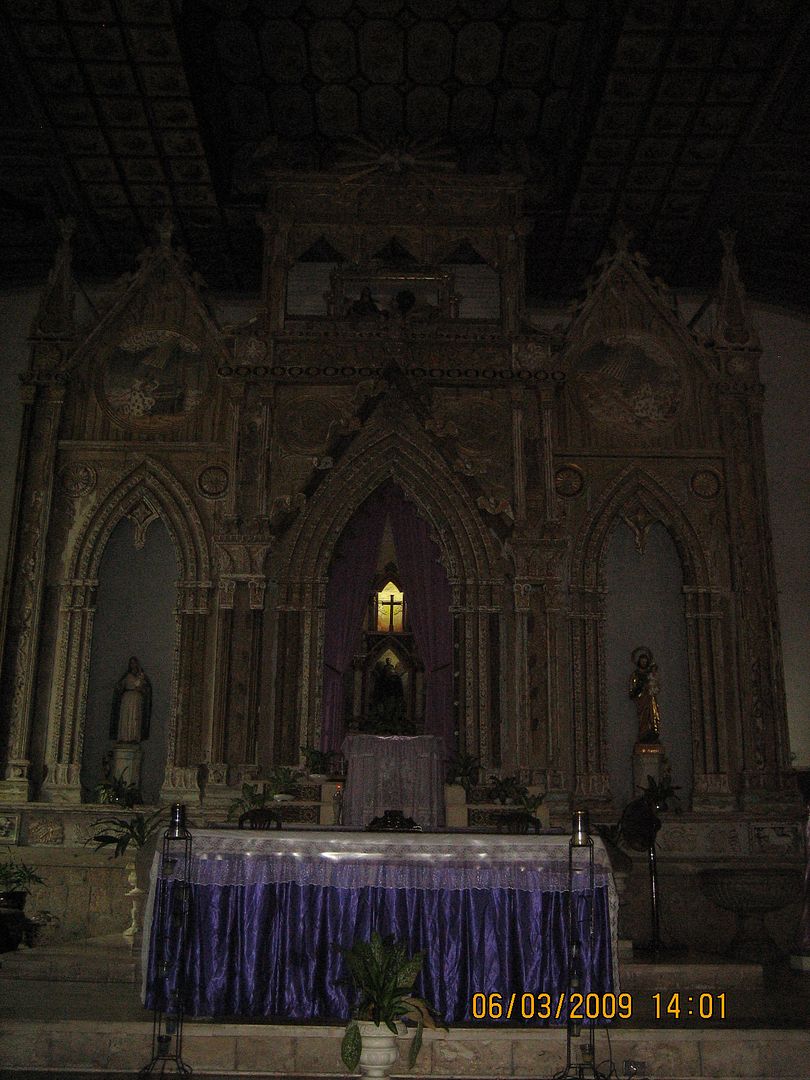
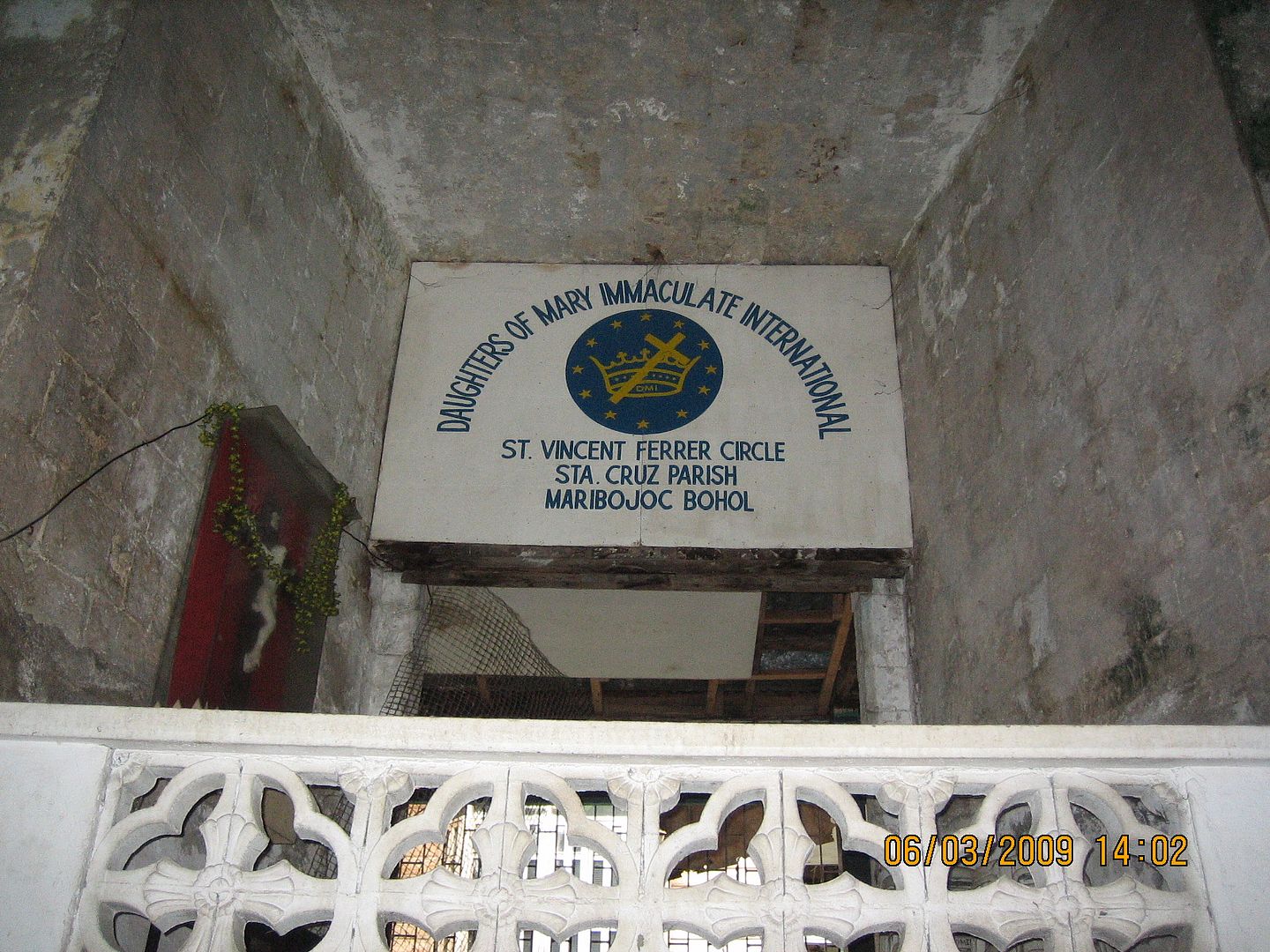
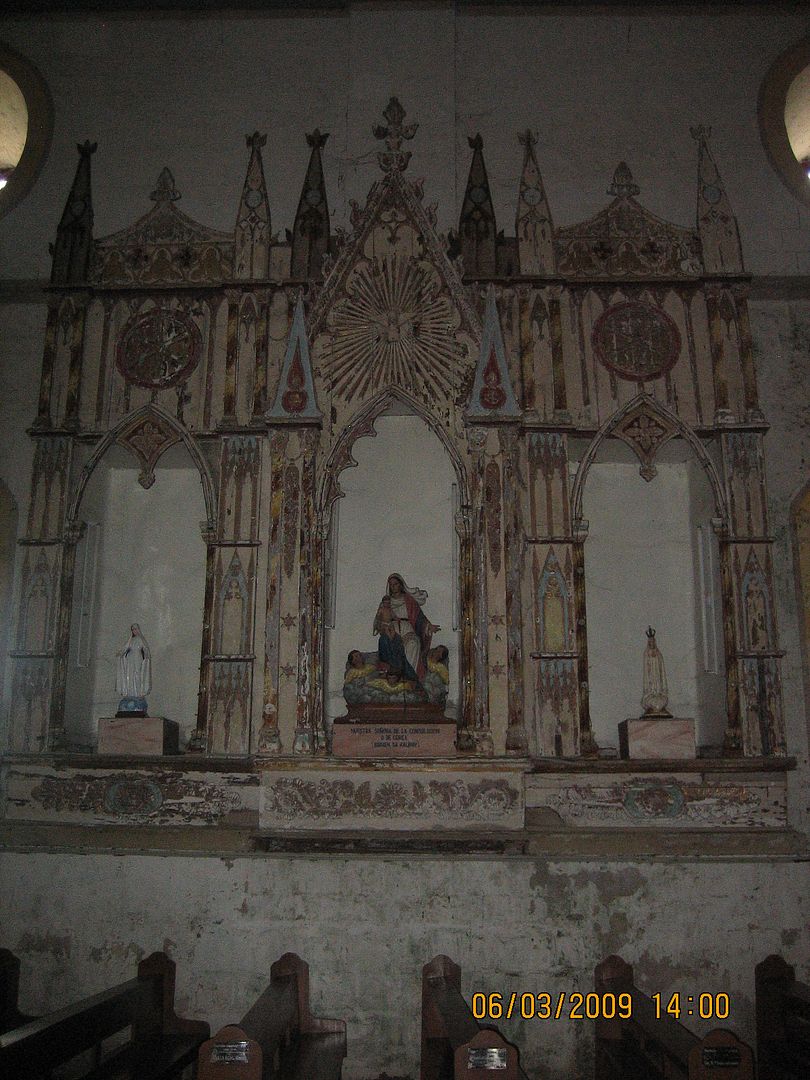


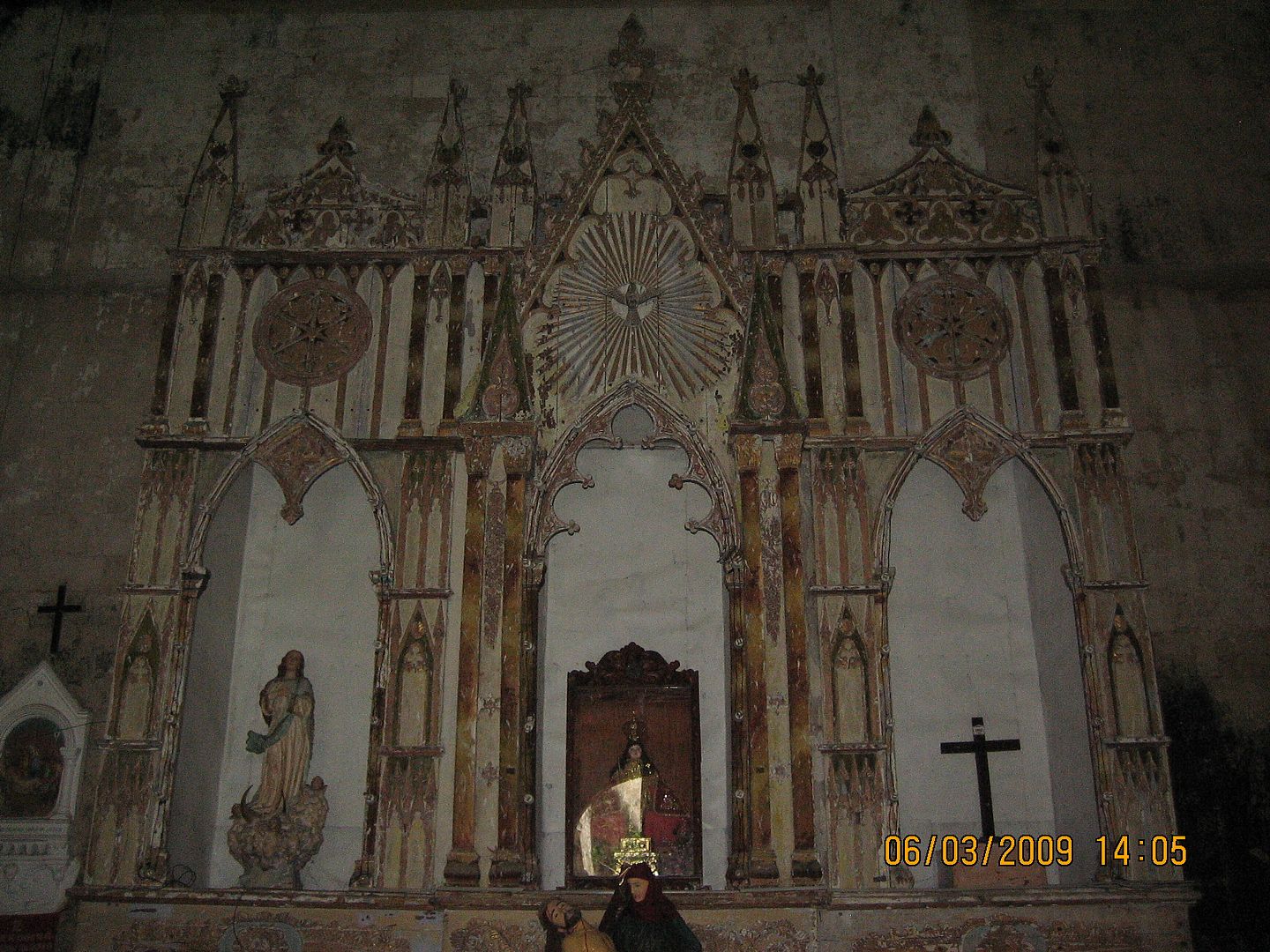
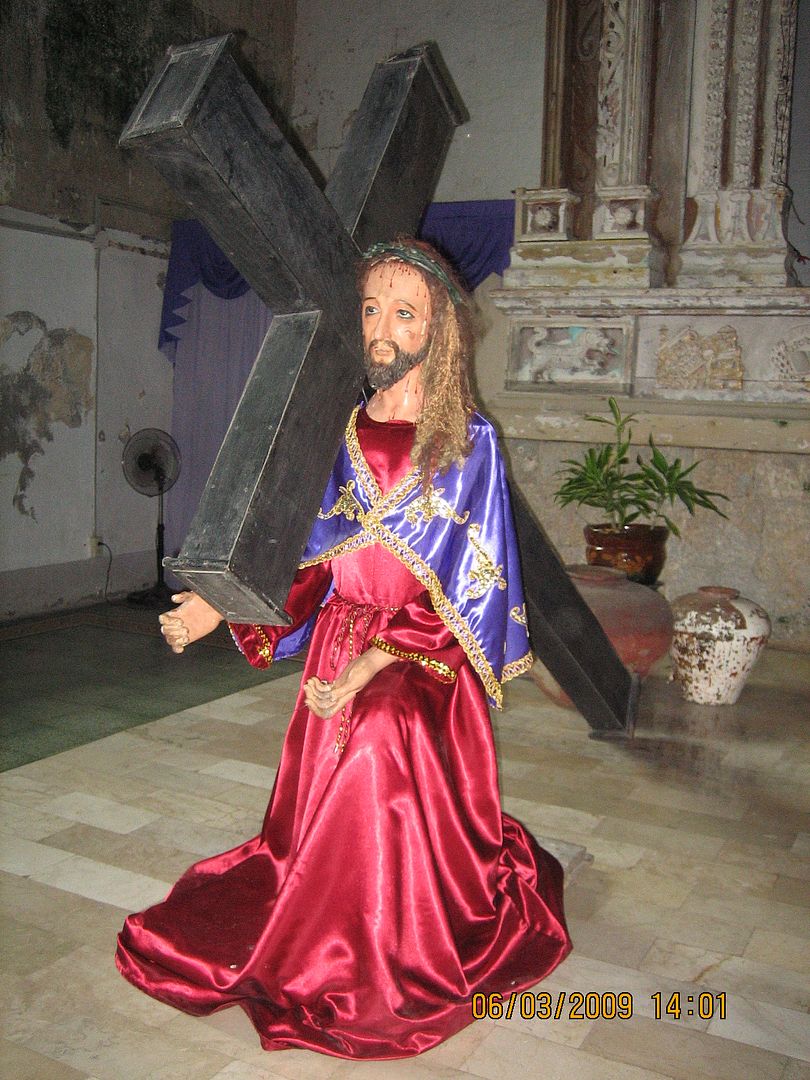
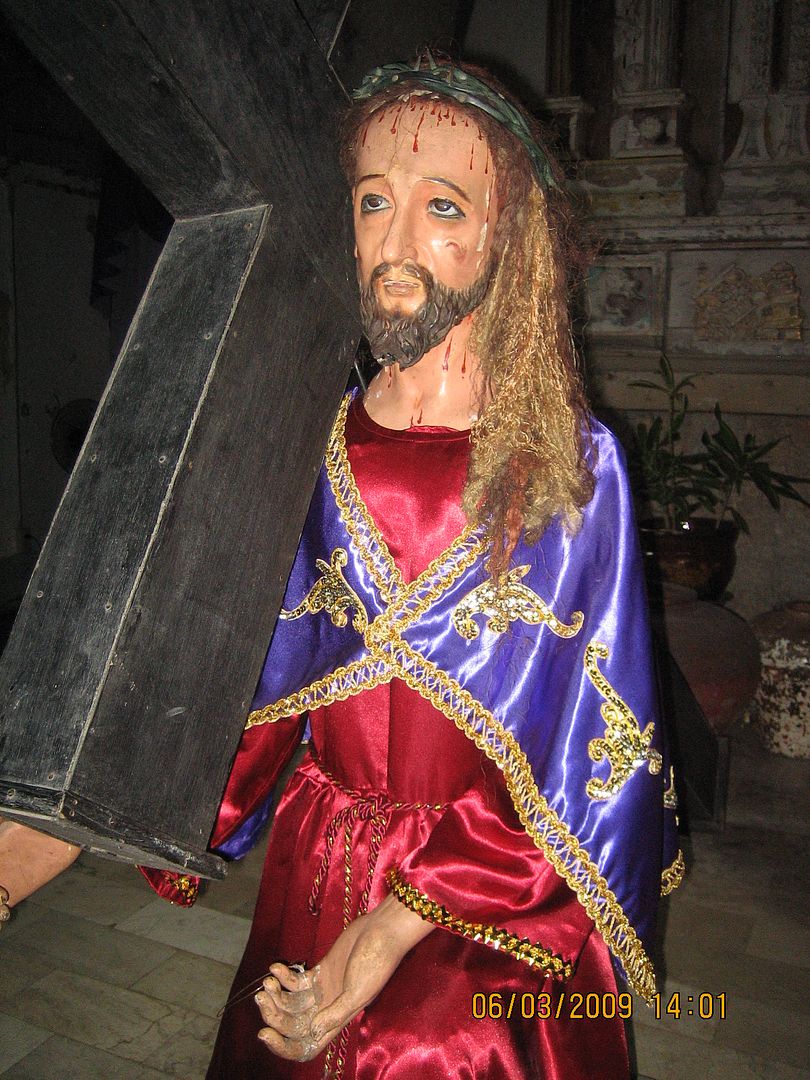

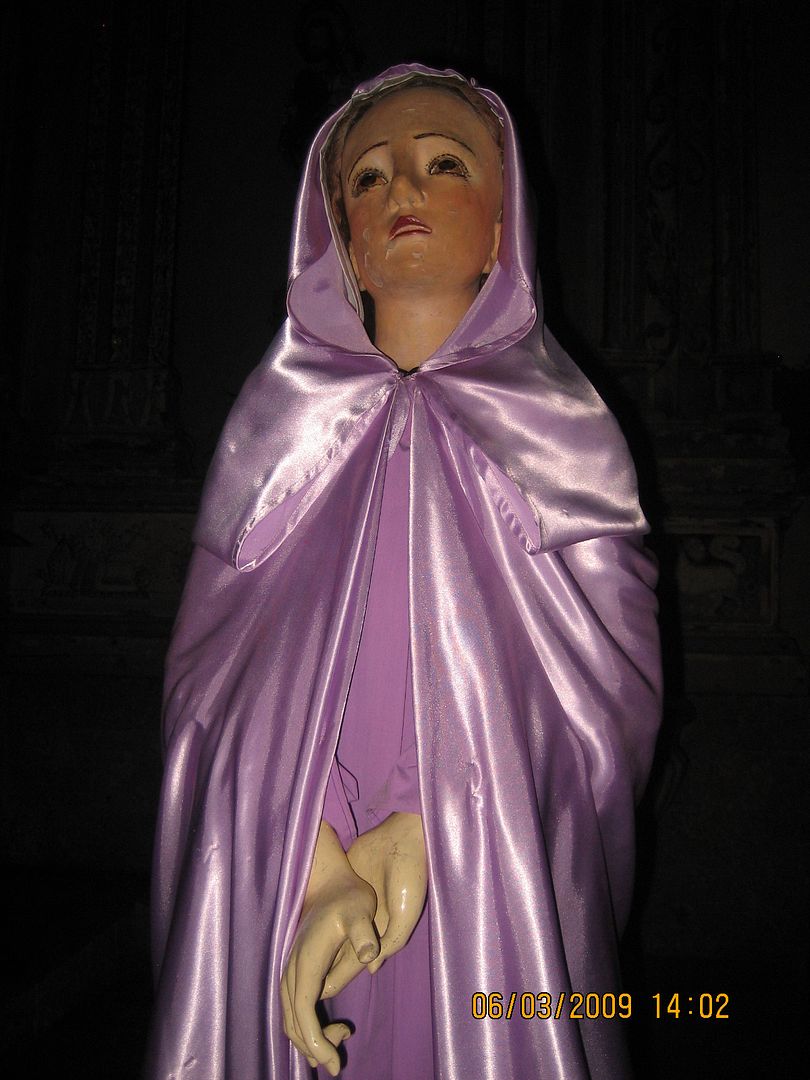
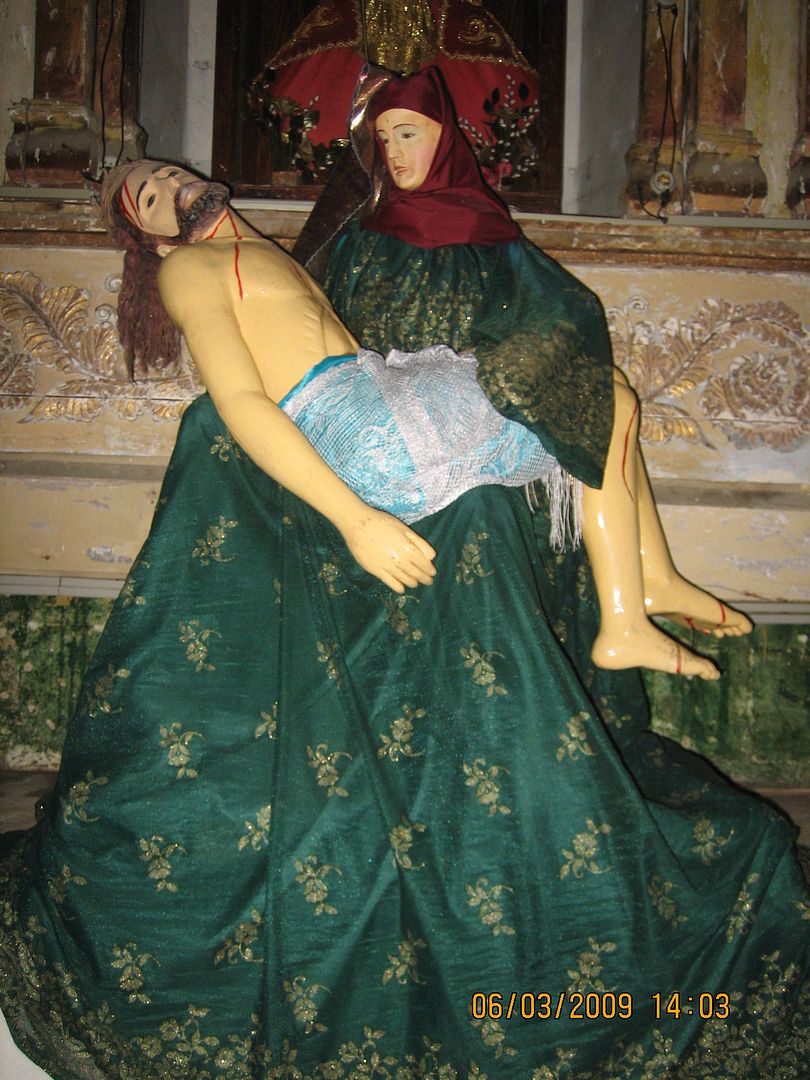

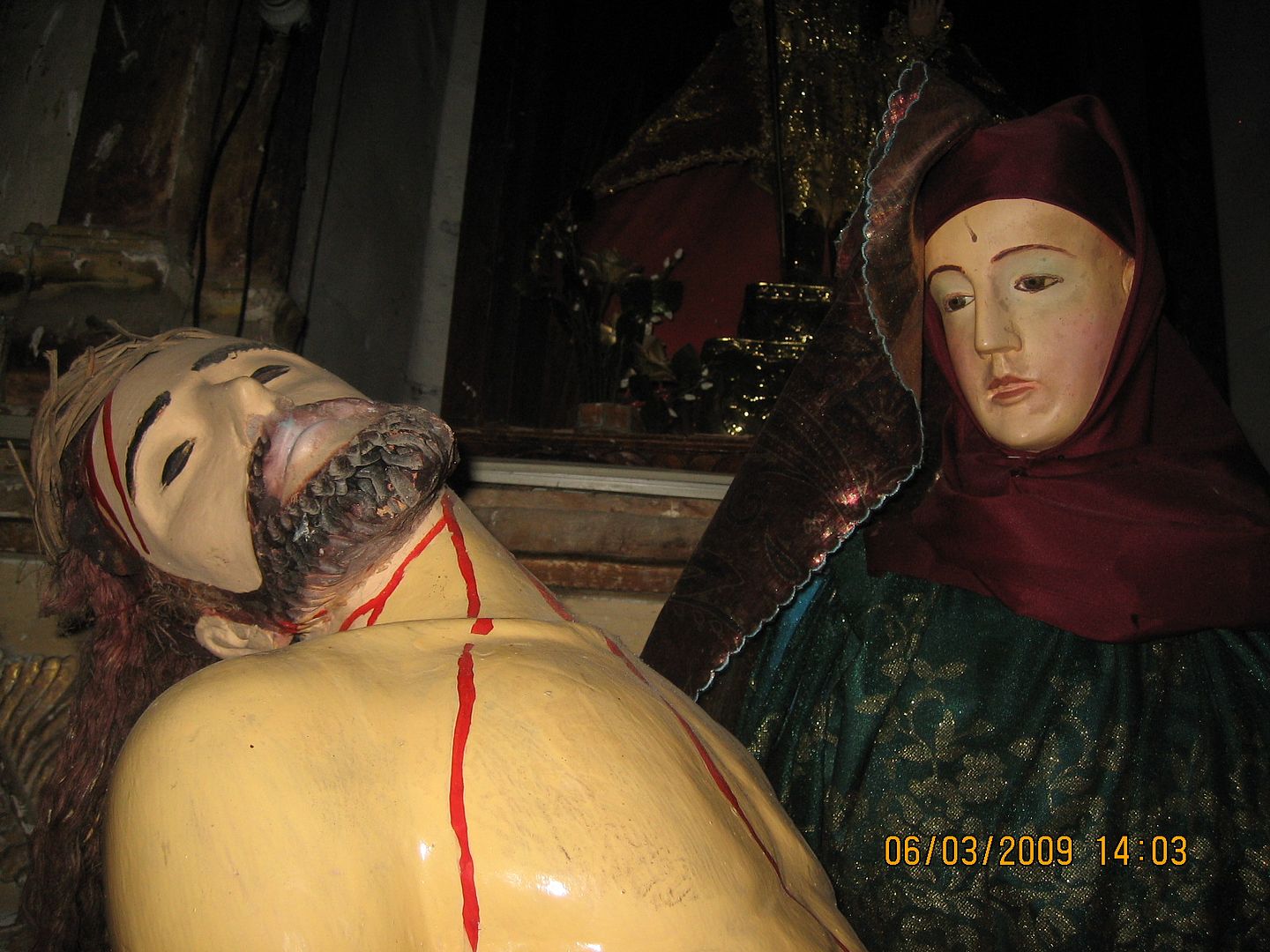
No comments:
Post a Comment